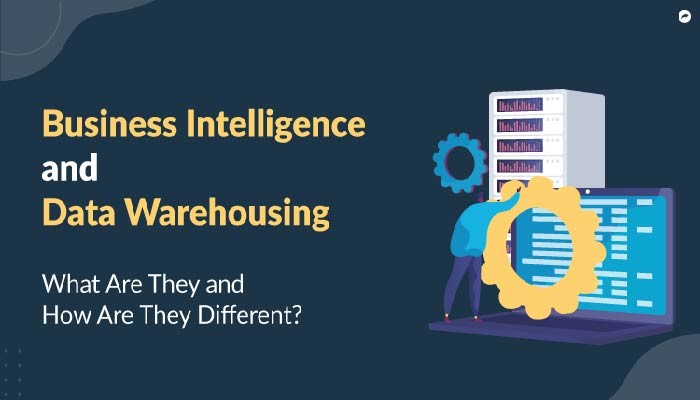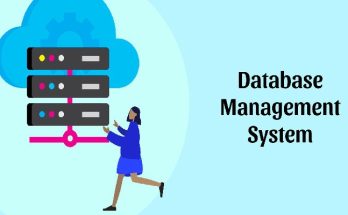Unleashing the Power of Data Warehousing and Business Intelligence
Unleashing the Power of Data Warehousing and Business Intelligence is very demanding nowadays.In the dynamic landscape of business operations, the seamless integration and analysis of vast datasets are pivotal for informed decision-making. This is where the synergy between Data Warehousing and Business Intelligence (BI) comes into play. In this article, we will delve into the definitions, functionalities, and the symbiotic relationship between data warehousing and business intelligence, exploring how these technologies empower organizations to derive actionable insights from their data.

Understanding Data Warehousin
Foundations of Data Warehousing: Storing and Organizing Data
A data warehouse is a centralized repository that consolidates and stores data from various sources within an organization. Unlike traditional databases, which are optimized for transactional processing, data warehouses are designed for analytical processing. The primary goal is to provide a unified and structured view of an organization’s historical and current data, enabling comprehensive analysis and reporting.
Data Warehousing Architecture: The Framework for Insightful Analytics
The architecture of a data warehouse involves the extraction, transformation, and loading (ETL) of data from source systems into a central repository. The data is organized in a way that facilitates querying and reporting. Dimensional modeling, involving facts and dimensions, is a common technique used to structure data within a warehouse. This architecture ensures that data is accessible, reliable, and optimized for analytical queries.
Empowering Decision-Making with Business Intelligence
Business Intelligence: Transforming Data into Actionable Insights
Business Intelligence encompasses the processes, technologies, and tools that convert raw data into meaningful insights, supporting strategic decision-making within an organization. BI solutions leverage data visualization, reporting, and analytics to deliver a clear and comprehensive view of business performance. The integration of BI tools with data warehousing creates a powerful synergy, allowing organizations to derive actionable insights from their vast datasets.
Key Components of Business Intelligence: Reporting and Analytics
Business Intelligence comprises various components, with reporting and analytics being the cornerstones. Reporting involves the creation and delivery of predefined, formatted reports, providing stakeholders with a snapshot of key performance indicators. On the other hand, analytics involves the exploration and analysis of data to uncover trends, patterns, and outliers, offering a deeper understanding of business dynamics.
The Synergy between Data Warehousing and Business Intelligence
Data Integration: The Backbone of Informed Decision-Making
The integration of data warehousing and business intelligence is fundamental for organizations seeking to extract maximum value from their data. Data warehouses serve as the consolidated repository, ensuring that diverse datasets are accessible for BI tools. This integration streamlines the process of data extraction, transformation, and loading, providing BI systems with a robust foundation for analysis and reporting.
Real-time Analytics: Navigating the Speed of Business
The synergy between data warehousing and business intelligence extends to real-time analytics. While data warehouses store historical and current data, BI tools leverage this information to provide real-time insights. This capability is invaluable for organizations operating in fast-paced environments, allowing them to make informed decisions based on the latest data trends and patterns.
Applications of Data Warehousing and Business Intelligence
Performance Monitoring: Benchmarking Success with BI
Business Intelligence tools enable organizations to monitor and benchmark their performance against key metrics. Whether it’s tracking sales figures, customer satisfaction scores, or operational efficiency, BI dashboards and reports provide a visual representation of performance trends. This empowers decision-makers to identify areas of improvement and make strategic adjustments to optimize business outcomes.
Predictive Analytics: Anticipating the Future with Data
Data warehousing and business intelligence together pave the way for predictive analytics. By analyzing historical data stored in the warehouse, BI tools can identify patterns and trends, enabling organizations to make predictions about future outcomes. This has profound implications for industries such as finance, marketing, and supply chain management, where accurate forecasting is critical for success.
Challenges and Considerations
Data Quality and Governance: The Pillars of Reliable Insights
Ensuring the quality and governance of data is a challenge faced by organizations implementing data warehousing and business intelligence. The success of BI initiatives hinges on the accuracy and reliability of the data stored in the warehouse. Establishing robust data governance practices, including data quality checks and validation processes, is essential to maintain the integrity of the insights derived from BI tools.
Scalability: Meeting the Growing Demands of Data
As organizations accumulate vast amounts of data, the scalability of data warehousing and business intelligence becomes a crucial consideration. Ensuring that the infrastructure can handle increasing data volumes and user demands is essential for maintaining performance and responsiveness. Cloud-based solutions have emerged as a viable option, providing scalable and cost-effective alternatives to traditional on-premises data warehouses.
Future Trends and Innovations
Augmented Analytics: The Evolution of BI
Augmented Analytics represents the next frontier in the evolution of business intelligence. This innovative approach leverages machine learning and artificial intelligence to automate data preparation, insight generation, and natural language processing. By automating routine tasks and uncovering hidden insights, augmented analytics enhances the efficiency and accessibility of BI, making data-driven decision-making more accessible to a broader audience within an organization.
Integration with Advanced Technologies: AI and IoT
The future of data warehousing and business intelligence lies in the integration with advanced technologies such as Artificial Intelligence (AI) and the Internet of Things (IoT). AI-powered analytics can enhance predictive modeling, while IoT data can be seamlessly integrated into data warehouses, providing a holistic view of operations. This convergence of technologies opens new possibilities for organizations to glean insights from diverse and complex datasets.
Conclusion:
The integration of data warehousing and business intelligence has become a cornerstone for organizations striving to thrive in the data-driven era. The synergy between these technologies empowers decision-makers with timely, accurate, and actionable insights. As we navigate the challenges and embrace the innovations shaping the future of data analytics, the collaboration between data warehousing and business intelligence will continue to be a driving force in unlocking the full potential of organizational data. Through strategic implementation and a commitment to data quality and governance, businesses can harness the power of these technologies to gain a competitive edge and foster a culture of informed decision-making.



